Ultimate Guide To Pinnacles National Park, California
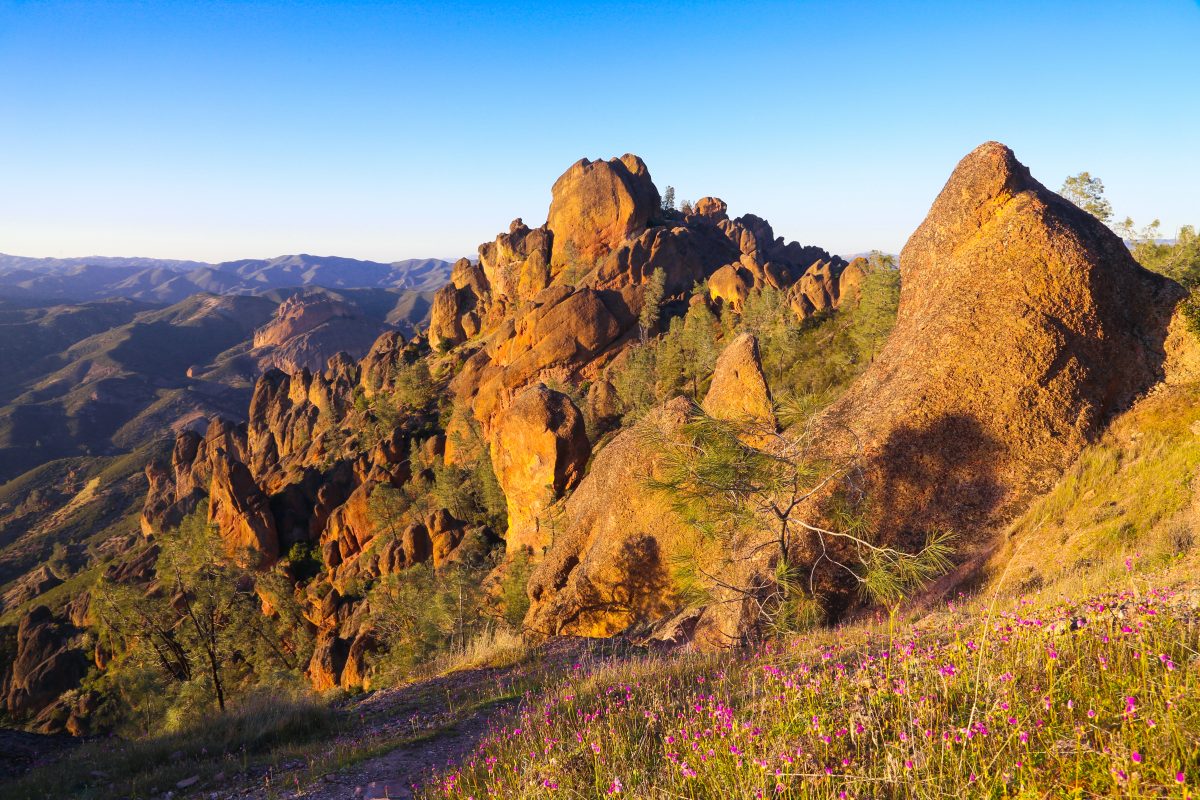
The Pinnacles National Park is draped over the Coast Ranges of California. But don’t expect the usual scenery that you see in national parks. This particular one is curiously different and nothing you’ve imagined. Here, a unique combination of climate and geology has created fascinating views that give it an almost otherworldly aura. Littered with plant species and rock shapes you might not encounter anywhere else in the Golden State, the Pinnacles National Park is truly a sight to behold!
Once a national monument and now a fully-fledged national park, the Pinnacles covers a whopping 26,600 acres of land. It’s one of the more off-the-beaten-track kinds of wilderness on the West Coast, with a mere 200,000 visitors per year (compare that to Yosemite’s five million!). However, those who venture within its boundaries will find natural wonders galore – from toppling hoodoos to rare birds of prey, shadowy cave systems to forests of Buckeye and the manzanita plant. So, expect to hit the High Peaks Trail or clamber up Machete Ridge on a harness.
This ultimate guide to the Pinnacles National Park will give you the full lowdown on this intriguing and enthralling section of Californian backcountry. We promise you’ll get a feel for its tumultuous geological history. So, buckle up to learn about these amazing creatures and expect some hot tips on the top trails.
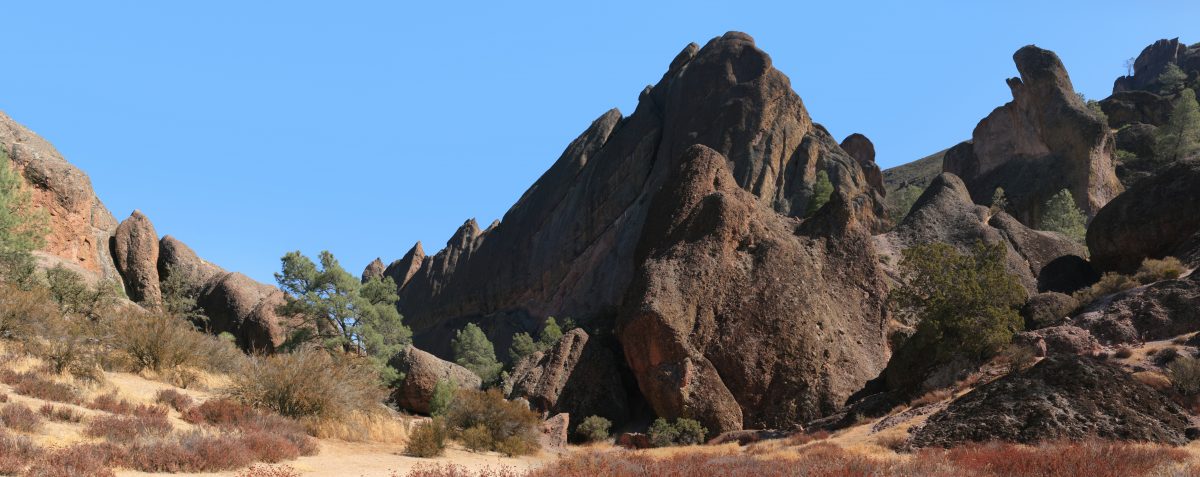
©Photo by Wiki Commons
Where exactly is Pinnacles National Park?
The entire 107 square kilometers of the Pinnacles is wedged into the southern half of the Gabilan Range. That’s a sub-range of the Californian Coast Ranges which splinter upwards from the Pacific Ocean and run all the way from Santa Barbara County near LA to San Francisco and beyond. As the condor flies, the park is some 40 miles from the coast of the Golden State and just over 80 miles away from the Bay Area. To be exact, it sits between the emerald-green rows of grapevine that spread through the fertile Salinas Valley to the west and the sinewy Diablo Range to the east.
The History of Pinnacles National Park
The tale of the Pinnacles National Park begins over 20 million years ago. As the Juan de Fuca Plate crashed underneath the North American Plate on the famous line of the San Andreas Fault, a mighty volcano – the Neenach Volcano – began erupting and carved the landscape as it was shifted along the Earth’s surface. These days, the crater is some 200 miles away from its original spot, while millennia of erosion and subsequent growth have chipped the old mountain cones into towering rock spires, bare bluffs, caves, and forests.
How to get to Pinnacles National Park
There are two main entrances to the Pinnacles National Park: The West Entrance and the East Entrance. The former is the best option if you’re heading in from the stunning Pacific Coast Highway or the 101, or coming down from the salt-washed seaside town of Monterey. On the other hand, the East Entrance is better linked to the San Fran Bay Area, interlinking the town of Hollister slightly north. Take note: there are no roads that connect through the park — only a labyrinth of hiking trails.
However, the good facilities at both gateways is a plus point for Pinnacles National Park. These include a small visitor’s center, large parking lots, and signposted trailheads. Nevertheless, it’s always a good idea to do your homework prior to your visit. Having a good grip of the various walking paths, lookouts, and caves is essential to make the best out of your trip to Pinnacles National Park.
Pinnacles National Park Weather
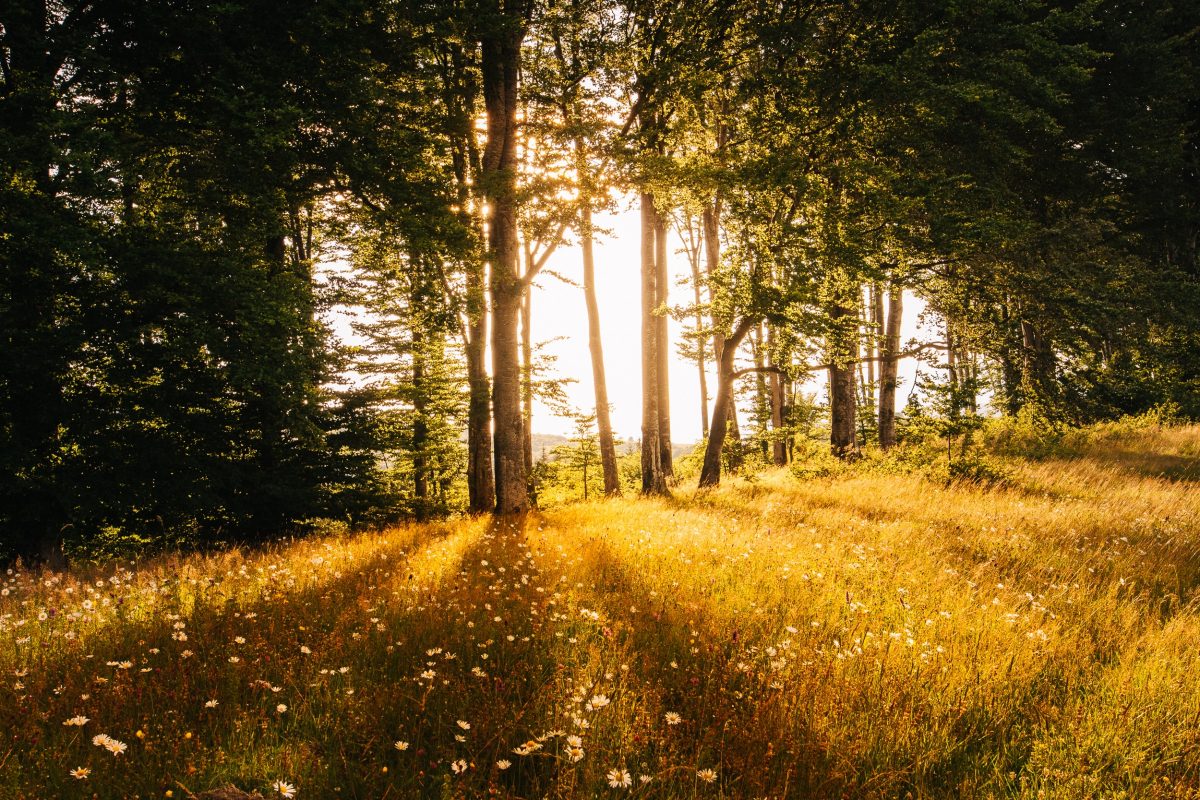
©Photo by Anton Darius on Unsplash
The main thing to bear in mind about the weather at Pinnacles National Park is how warm the summer can be here. Bear in mind, the temperatures regularly break the 100-degree-Fahrenheit-mark, so hiking can be off the itinerary (or just downright torture!) If you’re ever asked to go on a hiking adventure between July and August, there’s no need to state the obvious. However, if you don’t mind the warm and humid weather, it’s quite pleasant to hike for the majestic view.
Visit the Pinnacles during Spring as the weather is a doozy, and the blooming wildflowers is a plus. Otherwise, the fall season is another great option. During this season, there tend to be fewer people on the main paths. So, you’ll likely be the only one gazing off the High Peaks Trail at the ancient volcano and its talus caves. However, the weather can differ from time to time. Avoid coming here during the rainy season as the path can be quite slippery. Thus, we recommend visitors to do a Pinnacles weather check ahead before anything else.
How much is the entrance fee for Pinnacles National Park?
Visitors making for the stone hoodoos and bluffs of the Pinnacles National Park will have to pay an entry fee whether you’re coming with the car in tow, on foot, or by motorcycle. However, the rates do vary. The most common tariff is the weekly pass for a car that comes in at $30. On the other hand, an annual pass costs $55, just in case you intend on returning to conquer all 30 miles of trails! Don’t worry, passes can be purchased at both Pinnacles’ East and West entrances.
Where to stay in the Pinnacles National Park?
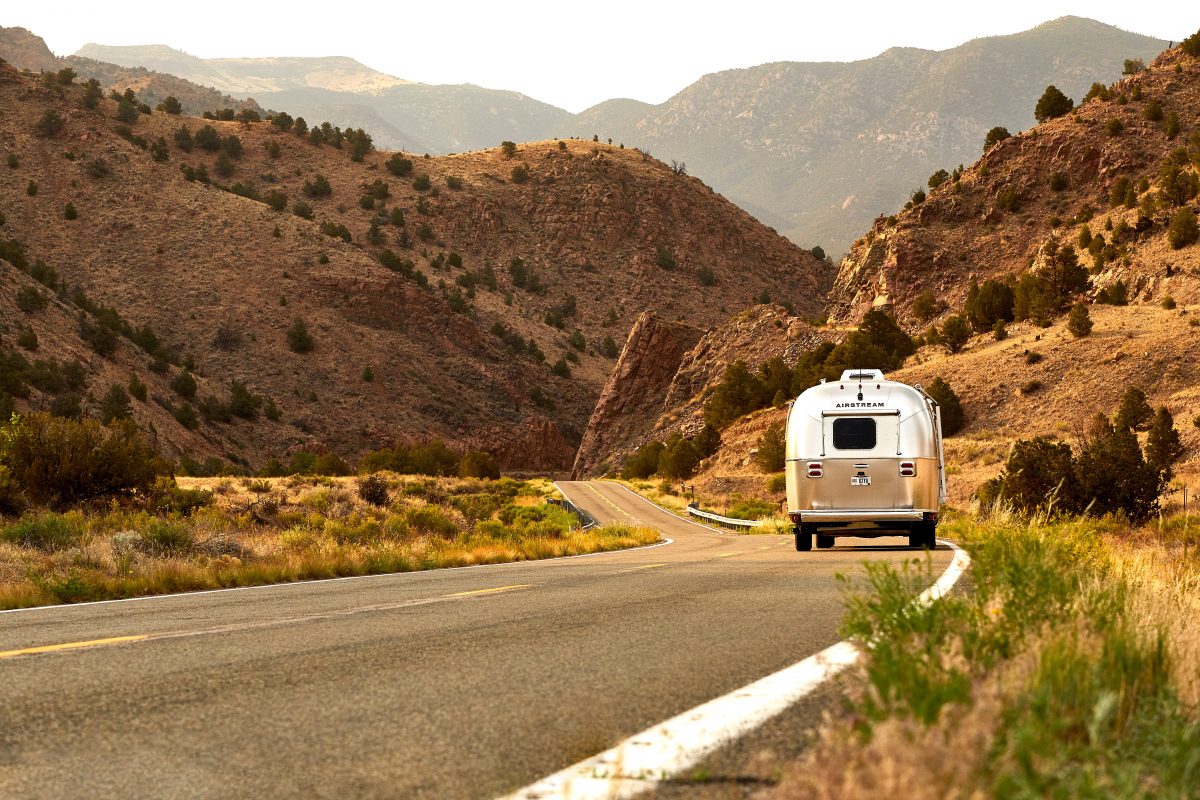
©Photo by Airstream Inc. on Unsplash
Being a protected wilderness area means there are limited accommodation options in Pinnacles National Park itself. However, the Pinnacles campground does offer some pitches and RV spots at the East Entrance. Do take note that these Pinnacles campgrounds are limited, and you probably need to make a reservation in advance. This is especially important if you’re planning to visit Pinnacles National Park during the peak season like spring or summer.
If the Pinnacles campground is not an option, you could opt for some of the Pinnacles National Park hotels along the roadway on the western end of the reserve. They aren’t just great for adding extra comfort to a trip but also provide access to the beautiful Salinas Valley. The best part? It’s a haven for farm-to-table eateries, organic food producers, and wine tasting! Finally, the proximity of San Francisco’s Bay Area means it’s possible to drive down from cities like San Jose and hit the trails in a single day. The only downside is you’ll need to have your own car or book onto a private tour that leaves early.
Take Note: For a true camping experience, the Pinnacles campground is the best. Otherwise, follow our options as it’s equally good but expects to spend a little extra than renting a camping site at Pinnacles National Park.
Pinnacles Campground
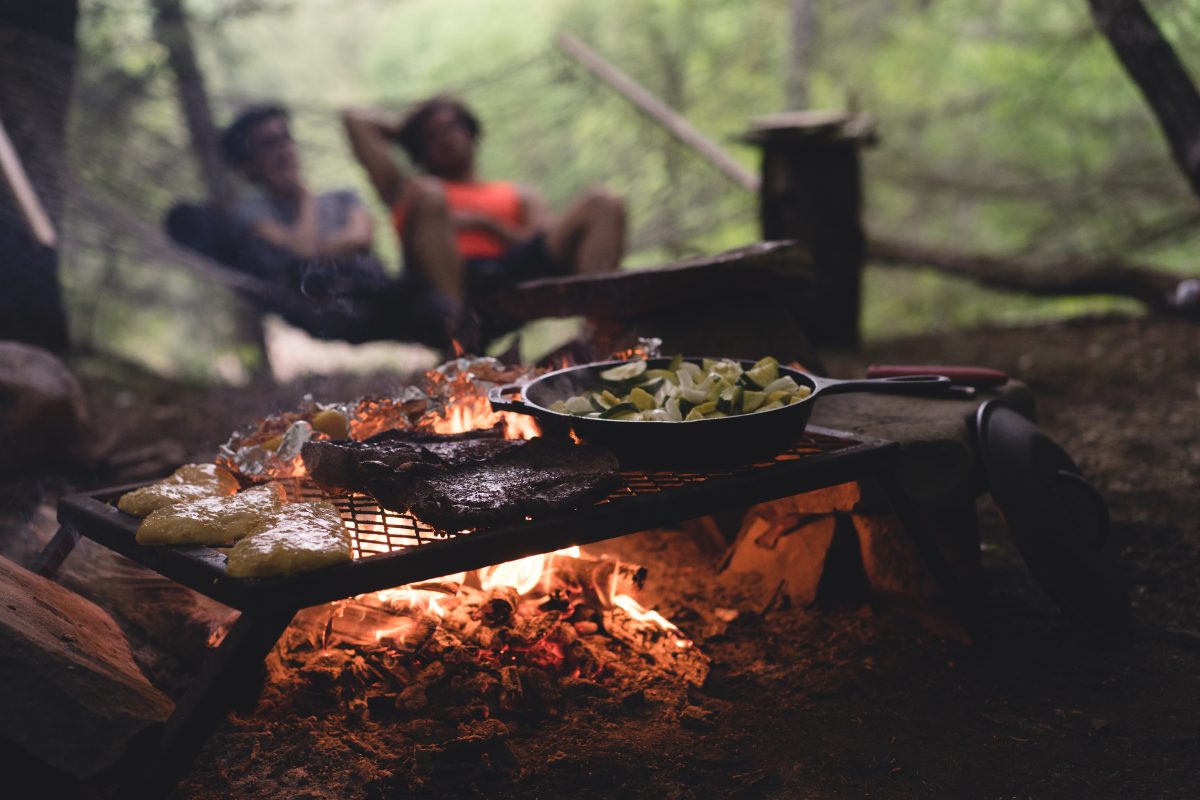
©Photo by Myles Tan on Unsplash
The campground in the Pinnacles is suitable for all kind of RVs with or without electrical hookups. While pets are allowed in the campground, all pets must be on a leash. Typically, campers and set up campfires; however, depending on the Pinnacles weather and conditions, campfire may be prohibited for safety purposes. If you’re keen for a refreshing dip in the swimming pool, visit in the month from April to end of September.
Things to do in Pinnacles National Park
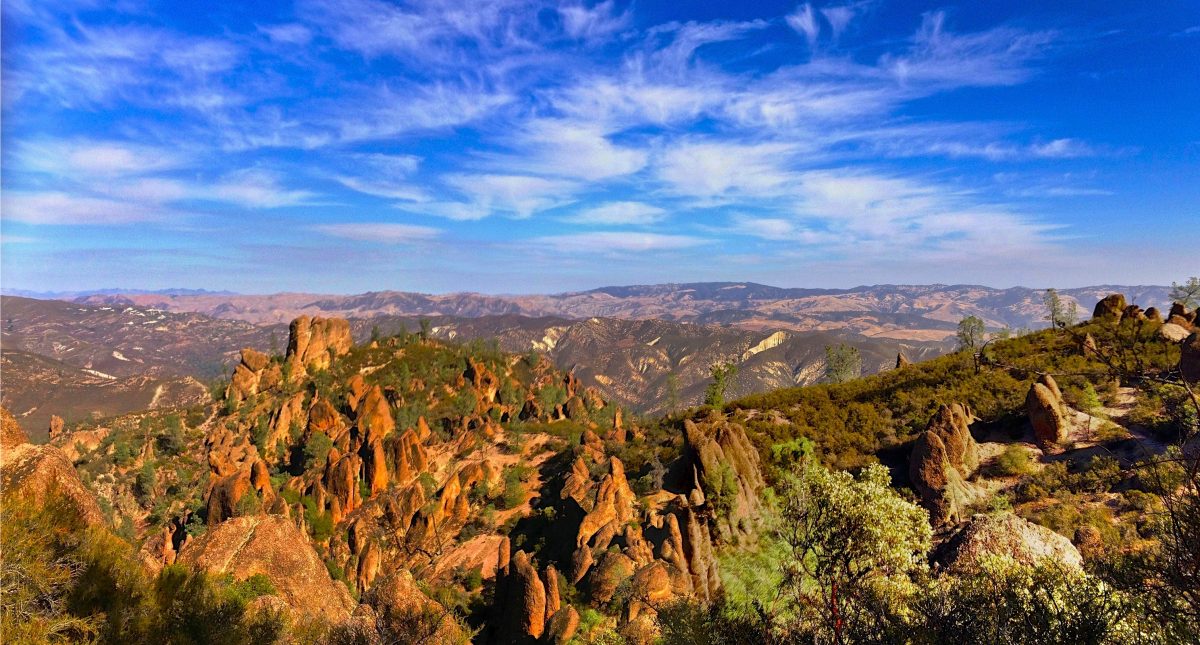
©Photo by Wiki Commons
Adventure abounds in the Pinnacles. This is a land of rough-stone ridges, buckeye groves, old-growth oak woods, rare biodiversity, dusty valley bottoms – the list goes on. The upshot? Intrepid folk with a compass, a map, and a sturdy pair of boots in tow aren’t ever likely to be bored. From spelunking through talus tunnels to clambering up volcanic rock faces, there are all sorts to keep you going.
Go hiking
If the weather is good, hiking is by far the number one attraction in the Pinnacles National Park. With basins of ancient stone whittled away by centuries of erosion, there’s really no better way to explore the wilderness than on foot. Plus, the volcanic activity mixing with the Californian scrub and chaparral in these parts is a sight that you can not miss.
What’s more? Walking paths are the only mode of access to certain portions of the reserve which means you’ll get to see the biggest highlights of the area if you’re prepared to lace up and hoof it. (For a guide to the top hiking paths on offer, be sure to read on below.)
Brave the rock climbing
The walls of igneous rock and quartz that protrude from the ground throughout the Pinnacles has elevated this Californian reserve to the forefront of American climbing. These days, there’s just shy of 200 routes on offer. You’ll find most of them easy to get to from the East Entrance to the park, while others clamber up the more challenging ridges of the High Peaks. That being said, this highest yet most dramatic backbone of summits in the California region has to be on your travel list. Some of the most popular options include the Discovery Wall (a two-pitch link that’s good for beginner climbers) and the arduous Machete Ridge (a multi-pitch monolith that’s only for experts).
Wildlife viewing
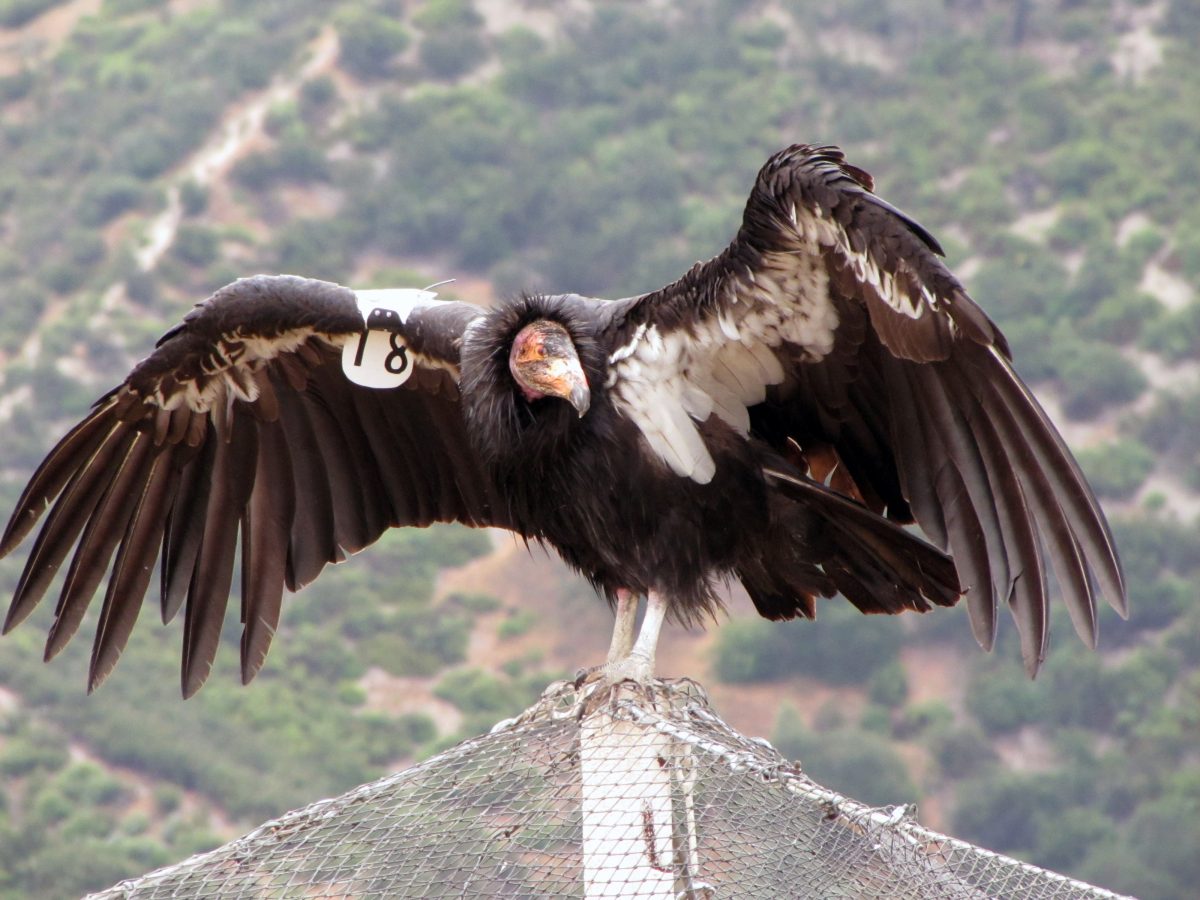
©Photo by Wiki Commons
Perhaps the most striking example of Pinnacles wildlife will be whizzing back and forth overhead. That’s the California condor, a critically endangered New World vulture that was actually totally extinct in the wild back in the late 80s. These days, successful reintroduction programs have brought them back across North America, and there’s now a population of around 25 in this corner of the Golden State. Aside from that, you’ll want to have the camera at the ready for snapshots of falcons, golden eagles, and horned owls. Meanwhile, on the ground, glimpses of bobcats, grey foxes, and cougar are unusual but possible. Enough said, Pinnacles National Park is a paradise for all wildlife observer.
Hit the viewpoints of Pinnacles National Park
If you’re nurturing a fascination for the ancient volcanic towers of the High Peaks (the piece de resistance of the Pinnacles National Park) but don’t want to embark on a multi-mile trek, you can always settle for the Peaks View lookout. It’s relatively easy to get to from the East Entrance and has its own picnic tables and toilets. Take note: from November to January, the Pinnacles weather can plummet down to 30.2 F. So, remember to bring your jacket along. Believe us, you don’t want to freeze while enjoying the mountain view on a viewpoint.
Stargazing at Pinnacles National Park
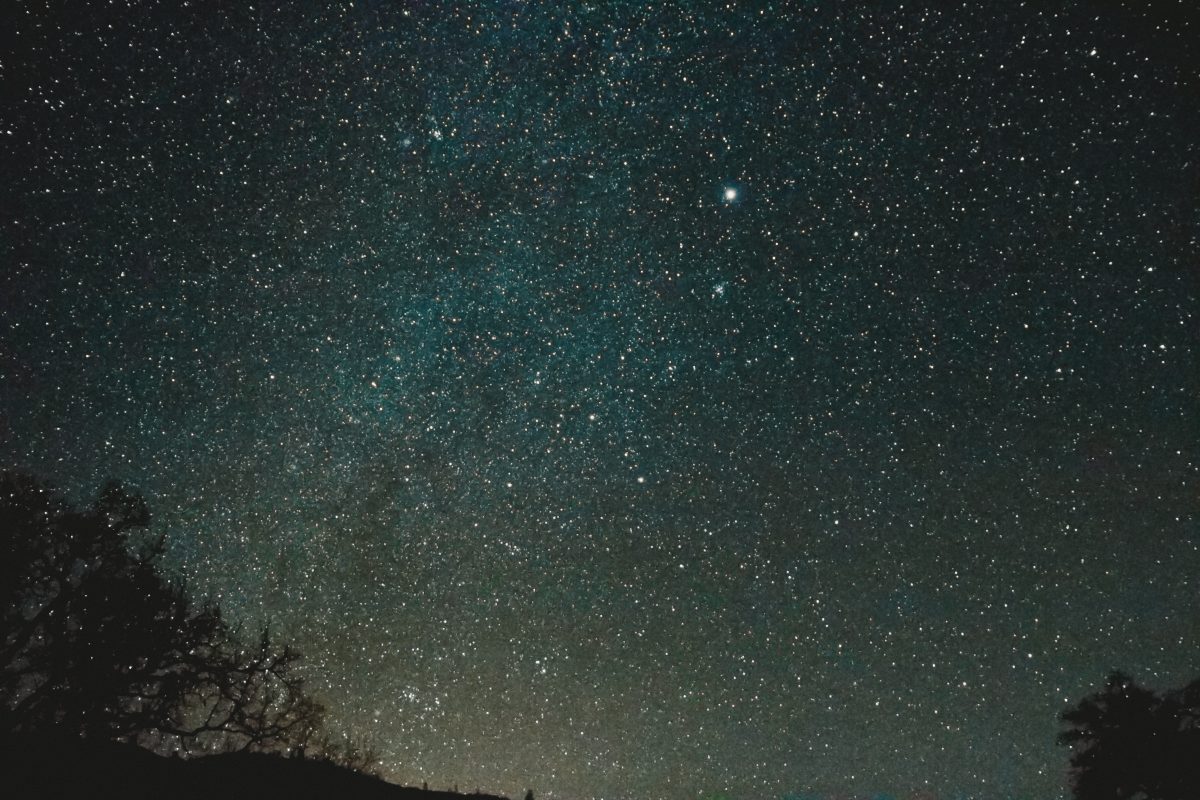
©Photo by Caleb Woods on Unsplash
To make the best out of your Pinnacles National Park experience, your trip here will not be complete without having to stargaze over the craggy hills. Join an organized tour with telescopes in hand at both East and West park entrances. Most stargazing activities take place when the sun dips low behind the coastal ridges and the Pacific Ocean to the west. That’s the moment when the stars resurface and the bright sky turns into a twinkling blanket of cosmic lights and nebulae. If you’re lucky, some twilight trips will even include guidance from local amateur astronomers.
The Best Hiking Trails in Pinnacles National Park
Although it’s a relatively young national park, the Pinnacles has already cooked up a menu of more than 30 miles of the marked hiking path. There’s a good mix of options — from quick hour-long loops to hardcore scrambles through the heart of the rugged High Peaks. The selection below should help you pick the right fit.
Bear Gulch Cave Trail
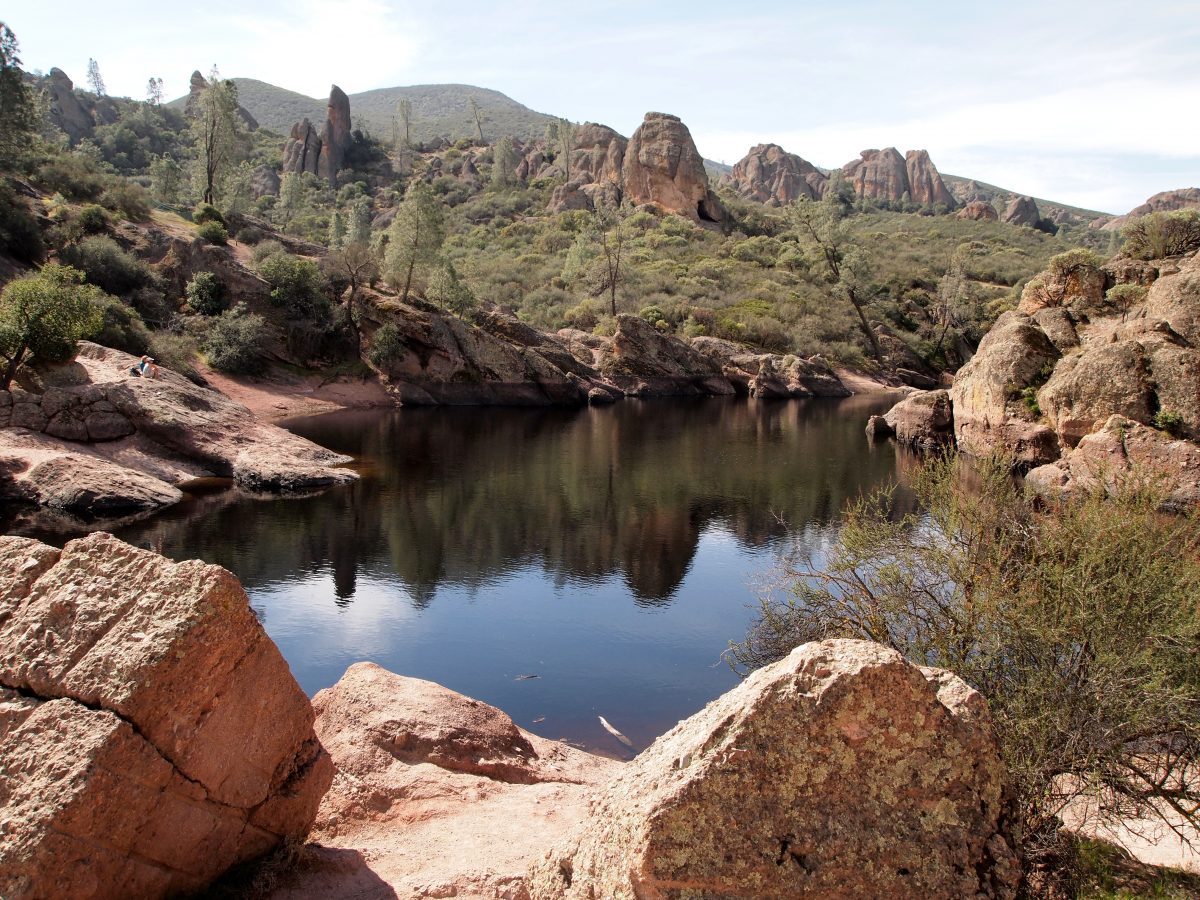
©Photo by Wiki Commons
Ringing around one of the prettiest corners of the Pinnacles National Park is the Bear Gulch Cave Trail which splinters southwards off of the High Peaks Trail, a short way from the East Entrance car park. Quick, easy, and filled with things to see, this trail takes about an hour from start to finish. For amateurs, the Bear Gulch Cave Trails only clocks up 1.5 miles in length. Halfway along the route, you can choose to dip into the Bear Gulch Cave, where a flashlight will be handy as you limbo under big stones and low ceilings. The prize at the end is the reflective water of the Bear Gulch Reservoir. And a chance to see the lookouts along the longer Rim Trail. Bringing your camera definitely is a plus for your trip to Pinnacles National Park.
Juniper Canyon Trail
Starting at the West Entrance to the Pinnacles National Park (opens at 7:30 AM), the Juniper Canyon Trail is a challenging but short introduction to the rugged and spectacular landscapes. There’s a sharp gain in elevation as you hairpin eastwards into the High Peaks and the stops under Condor Gulch Overlook. By all means, it’s wise to bring extra water and plenty of sunscreen along. In the end, the rewards include amazing views, natural springs, oak groves, and abundant wildlife.
Old Pinnacles Trail
The Old Pinnacles Trail is just over five miles of pathway runs from Pinnacles National Park East Entrance. This trail is especially famed for its trailhead parking to the northern sector of the High Peaks. This classic and the moderate-level walk features glimpses of Machete Ridge and the dark caverns of Balconies (be sure to bring the headlamp for that!). During springtime, this one also weaves through beautiful wildflower meadows where you can spot many of the park’s 400 species of bees.
High Peaks Loop
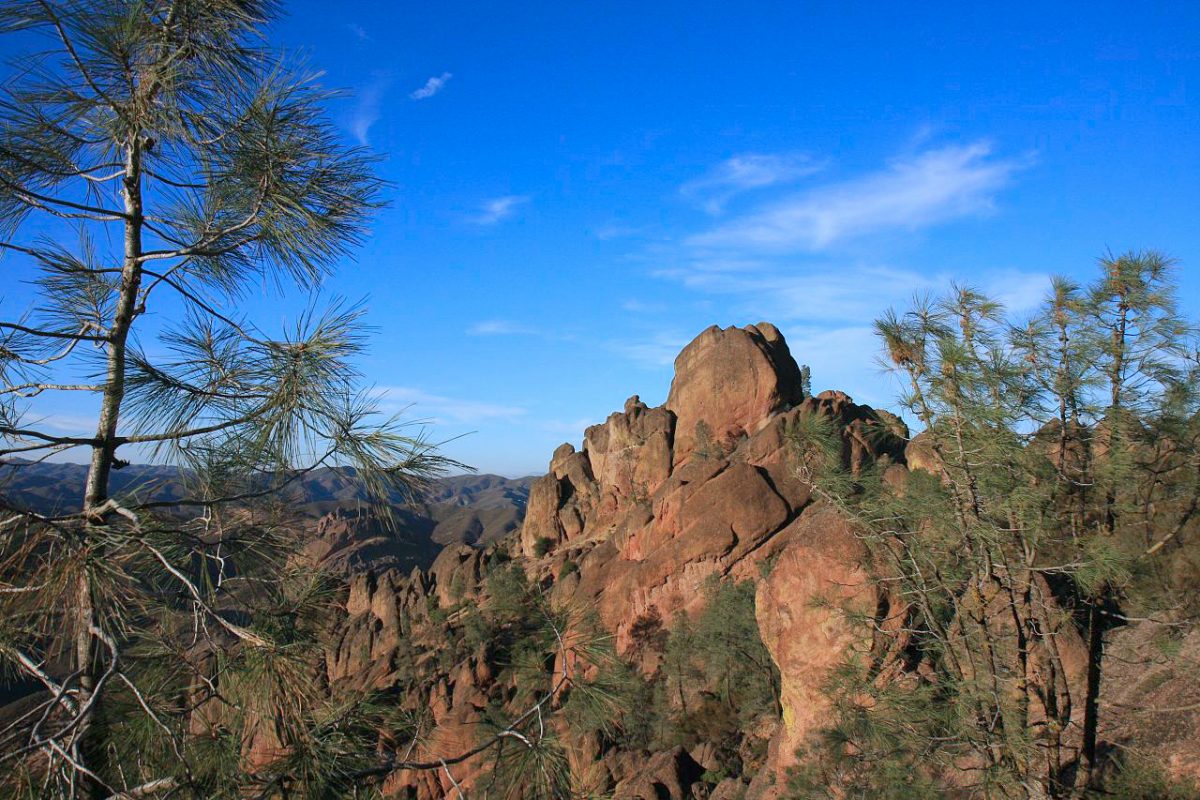
©Photo by Wiki Commons
Of all the trekking paths in the Pinnacles National Park, this is the one you simply can’t ignore. It pierces from east to west, straight through its namesake range of jagged and towering rock spires, the High Peaks. Along the way, you’ll also encounter all sorts of natural wonders, from babbling highland streams to boulder-wrought talus caves to sheer-cut canyons. The route is fringed for miles by scraggly California buckeye and multicolored flowerbeds (at least in April and May). At its hardest points, it follows staircases cut straight into the face of the rock and huge boulders angled on the mountainsides.
If you’ve got anything to add to this ultimate guide to the Pinnacles National Park, we’d love to hear from you. That way, we can keep things up to date and accurate when it comes to guiding folk through this awesome corner of California…

